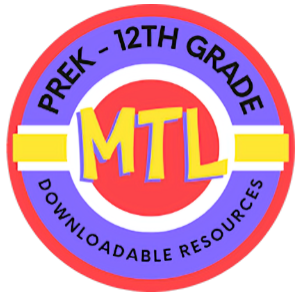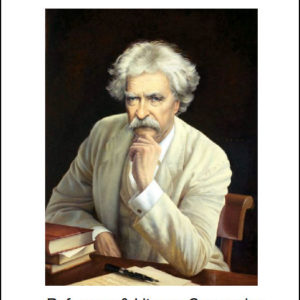Showing 121–140 of 141 resultsSorted by latest
-
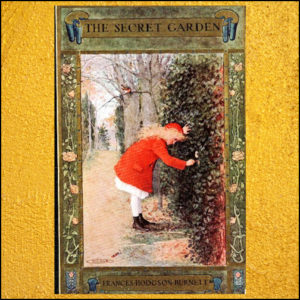 $2.50Buy Now
$2.50Buy NowThis is a downloadable copy of the book. (400 pages)
About the book: When Mary Lennox was sent to Misselthwaite Manor to live with her uncle, everybody said she was the most disagreeable-looking child ever seen…So begins the famous opening of one of the world’s best-loved children’s stories. First published in 1911, this is the poignant tale of a lonely little girl, orphaned and sent to a Yorkshire mansion at the edge of a vast lonely moor. At first, she is frightened by this gloomy place, but with the help of the local boy Dickon, who earns the trust of the moor’s wild animals with his honesty and love, the invalid Colin, a spoiled, unhappy boy terrified of life, and a mysterious, abandoned garden, Mary is eventually overcome by the mystery of life itself—its birth and renewal, its love and joy.
Interest Level Reading Level Grades 4 – 8 Grades 5 – 10 -
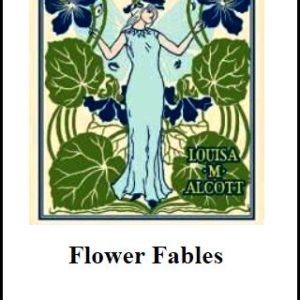 $2.50Buy Now
$2.50Buy NowThis is a downloadable copy of the book.
About the book: Flower fables was the first work published by Louisa May Alcott and appeared on December 4, 1849. The book was a compilation of fanciful stories first written seven years earlier for Ellen Emerson.About the Author: Louisa May Alcott was an American novelist, short story writer and poet best known as the author of the novel Little Women and its sequels Little Men and Jo’s Boys.
-
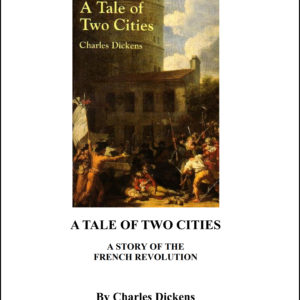 $3.00Buy Now
$3.00Buy NowDickens’ best-known work of historical fiction, with over 200 million copies sold A Tale of Two Cities is regularly cited as the best-selling novel of all time. A Tale of Two Cities is an 1859 historical novel by Charles Dickens, set in London and Paris before and during the French Revolution. The novel tells the story of the French Doctor Manette, his 18-year-long imprisonment in the Bastille in Paris and his release to live in London with his daughter Lucie, whom he had never met. The story is set against the conditions that led up to the French Revolution and the Reign of Terror.
- Interest Level: Grade 5 – Grade 12 ·
- Reading Level: Grade 9
-
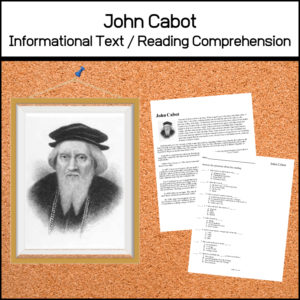 $1.00Buy Now
$1.00Buy NowThis John Cabot resource is perfect for a quick World History lesson or a Language Arts lesson! Cabot’s was an Italian navigator and explorer. His 1497 discovery of the coast of North America under the commission of Henry VII of England is the earliest known European exploration of coastal North America since the Norse visits to Vinland in the eleventh century. Students will enjoy learning more about this explorer and how he too (like Columbus) thought he had sailed to the Far East!
-
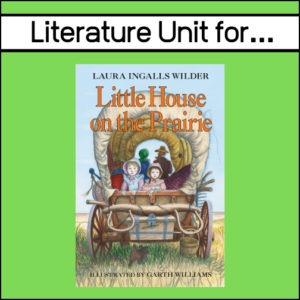 $1.50Buy Now
$1.50Buy NowThis resource offers reading comprehension and discussion questions about the story and characters.
About the book (Not included):
Little House on the Prairie was the third novel published in the Little House series, continuing the story of the first, Little House in the Big Woods (1932), but not related to the second. Thus, it is sometimes called the second one in the series, or the second volume of “the Laura Years”.Interest Level:
Grades 4 – 8Reading Level:
Grades 4 – 5 -
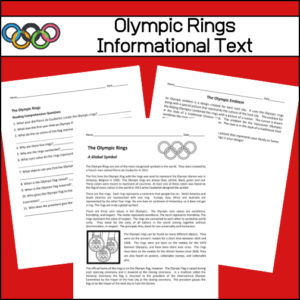 $1.50Buy Now
$1.50Buy NowThis informational article will inform students about the history behind and the symbolism of the Olympic rings. After reading one page of text, student comprehension will be assessed by answering 11 short answer questions. There is also a fun, creative project included.
Automated Readability Index: 6.2
Grade level: 10-11 yrs. olds (Fifth and Sixth graders) -
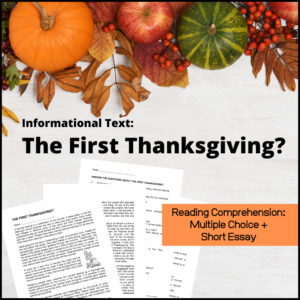 $2.00Buy Now
$2.00Buy NowInformational Text – The First Thanksgiving? was created to give your students not only a clear understanding of the history behind the holiday we call ‘Thanksgiving’ but also about how it is a story of struggle, hope and resilience.
-
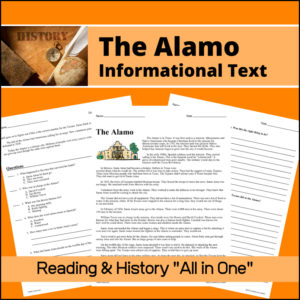 $1.50Buy Now
$1.50Buy NowThe Alamo – Informational Text is a resource designed to give your students a better understanding of the Alamo and answer the following questions for them: What is it? Where is it? What happened there? What is it today?
Cross-curricular – As students read for understanding they will be learning about an important landmark and event in U.S. History. After reading, students will answer multiple choice, short answer and short essay questions.
-
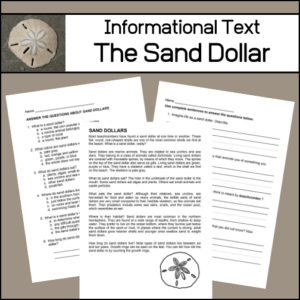 $1.50Buy Now
$1.50Buy NowThis informational article will teach students about the sand dollar. They will learn that the little round, coin-shaped shell found on the beach is actually part of a marine animal, related to sea urchins and sea stars. They will also learn how living sand dollars move, that they aren’t ‘white’, how and what they eat and much more. After reading, students will complete two worksheets (multiple choice and short answer) to assess their comprehension / understanding of the material. Answer Key is provided.
Automated Readability Index: 4.8
Grade level: 8-9 yrs. old (Fourth and Fifth graders)
Linsear Write Formula : 5.6
Grade level: Sixth Grade. -
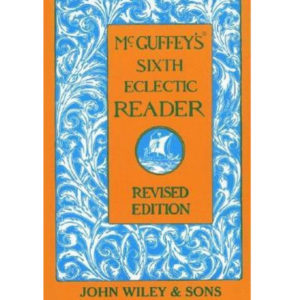 $3.00Buy Now
$3.00Buy NowSince 1836, children have been delighted by these volumes filled with exotic adventures, exciting stories, beautiful poems, and funny fables. The Sixth Eclectic Reader includes selections from Patrick Henry, Sir Walter Scott, Elizabeth Barrett Browning, and William Shakespeare.
-
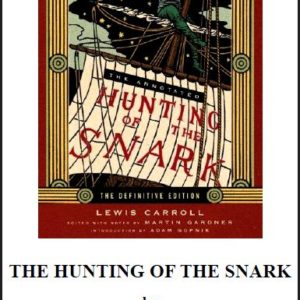 $2.50Buy Now
$2.50Buy NowThis is a downloadable copy of the book.
About the book: A poem typically categorized as a nonsense poem. Written from 1874 to 1876, the poem borrows the setting, some creatures, and eight portmanteau words from Carroll’s earlier poem “Jabberwocky” in his children’s novel Through the Looking-Glass (1871).About the Author: Lewis Carroll, was an English writer of world-famous children’s fiction, notably Alice’s Adventures in Wonderland and its sequel Through the Looking-Glass. He was noted for his facility at word play, logic, and fantasy. The poems Jabberwocky and The Hunting of the Snark are classified in the genre of literary nonsense. He was also a mathematician, photographer, and Anglican deacon. (Lewis Carroll is a pen name – Given name was Charles Lutwidge Dodgson)
-
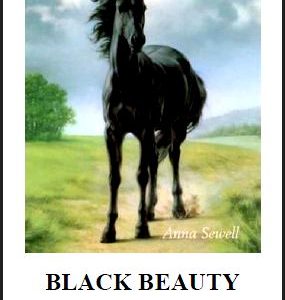 $2.00Buy Now
$2.00Buy NowThis is a downloadable copy of the book.
About the book: The story is narrated in the first person as an autobiographical memoir told by the titular horse named Black Beauty—beginning with his carefree days as a colt on an English farm with his mother, to his difficult life pulling cabs in London, to his happy retirement in the country. Along the way, he meets with many hardships and recounts many tales of cruelty and kindness. Each short chapter recounts an incident in Black Beauty’s life containing a lesson or moral typically related to the kindness, sympathy, and understanding treatment of horses, with Sewell’s detailed observations and extensive descriptions of horse behavior lending the novel a good deal of verisimilitude.About the Author: Anna Sewell was an English novelist. She is well known as the author of the 1877 novel Black Beauty, which is now considered one of the top ten bestselling novels for children ever written, although it was intended at the time for an adult audience.
-
 $4.00Buy Now
$4.00Buy NowBiography & Literary Analysis – Arthur Miller
517 pages -
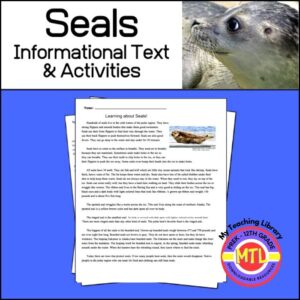 $2.00Buy Now
$2.00Buy NowThis informational text article is all about seals, where they live, their physical characteristics and about several different types of this cold-water mammal. After reading, students will complete a reading comprehension worksheet and (optional) write a story! Answer key provided.
-
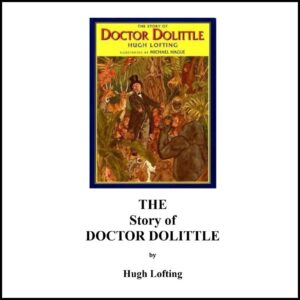 $2.00Buy Now
$2.00Buy NowThis is a downloadable copy of the book.
About the book: The Story of Doctor Dolittle, (Being the History of His Peculiar Life at Home and Astonishing Adventures in Foreign Parts) (1920), written and illustrated by the British author Hugh Lofting, is the first of his Doctor Dolittle books, a series of children’s novels about a man who learns to talk to animals and becomes their champion around the world. It was one of the novels in the series which was adapted into the film Doctor Dolittle.About the Author: Hugh John Lofting was an English author trained as a civil engineer, who created the classic children’s character of Doctor Dolittle. Dolittle first appeared in Lofting’s illustrated letters to his children, written from the British Army trenches in World War I. He travelled widely as a civil engineer, before enlisting in the Irish Guards regiment of the British Army to serve in the First World War. Not wishing to write to his children about the brutality of the war, he wrote imaginative letters which later became the foundation of the successful Doctor Dolittle novels for children.
-
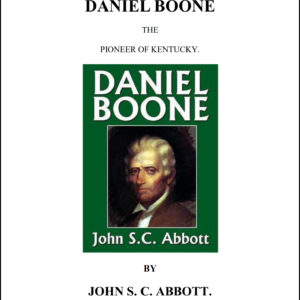 $2.50Buy Now
$2.50Buy NowDaniel Boone is regarded as the first real American folk hero. Without his cunning bravery, settlement west of the Appalachians may not have been made possible for years. Boone’s Wilderness Road, which is still used today, helped bridge the Cumberland Gap, granting access to the state of Kentucky from Pennsylvania.
Thanks to the writing of John S. C. Abbot, the life and genius of Boone can truly be appreciated through Daniel Boone: The Pioneer of Kentucky. Find out just how Boone crafted his Wilderness Trail, what he did to make it happen, and how he overcame the struggles of life in late eighteenth century America.
-
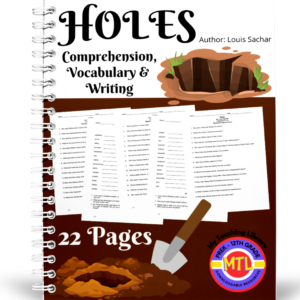 $3.25Buy Now
$3.25Buy NowThis book unit (Holes by Lousi Sachar) provides reading comprehension questions, vocabulary work and discussion questions in which students will be tasked with writing their answers.
There are 22 pages and split into groups of chapters for ease of assignment/use:
- Chapters 1-5
- Chapters 6-10
- Chapters 11-16
- Chapters 17-22
- Chapters 23-28
- Chapters 29-33
- Chapters 34-39
- Chapters 40-45
- Chapters 46-50
Also included: Extended activity ideas and answer keys
About the book:
Holes is a 1998 novel written by Louis Sachar. It won the 1998 U.S. National Book Award for Young People’s Literature and the 1999 Newbery Medal for the year’s “most distinguished contribution to American literature for children”. The story centers on an unlucky teenage boy named Stanley Yelnats, who is sent to Camp Green Lake, a juvenile corrections facility in a desert in Texas, after being falsely accused of theft. The plot explores the history of the area and how the actions of several characters in the past have affected Stanley’s life in the present. These interconnecting stories touch on themes such as racism, homelessness, illiteracy, and arranged marriage.Interest level:
Grades 4 – 8Reading level:
Grades 3 – 8 -
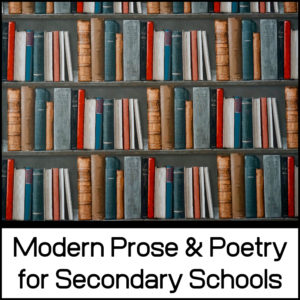 $2.00Buy Now
$2.00Buy NowThis resource contains a variety of literary works from authors such as Walt Whitman, George Cabot Lodge, and Edith M. Thomas.
-
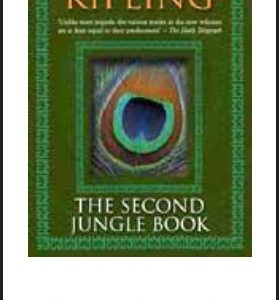 $2.50Buy Now
$2.50Buy NowThis is a downloadable copy of the book.
About the book: The Second Jungle Book is a sequel to The Jungle Book. First published in 1895, it features five stories about Mowgli and three unrelated stories, all but one set in India,About the Author: Joseph Rudyard Kipling was an English journalist, short-story writer, poet, and novelist. He was born in India, which inspired much of his work. Kipling in the late 19th and early 20th centuries was among the United Kingdom’s most popular writers. In 1907, he was awarded the Nobel Prize in Literature, as the first English-language writer to receive the prize, and at 41, its youngest recipient to date. He was also sounded for the British Poet Laureateship and several times for a knighthood but declined both. Following his death in 1936, his ashes were interred at Poets’ Corner, part of the South Transept of Westminster Abbey.
